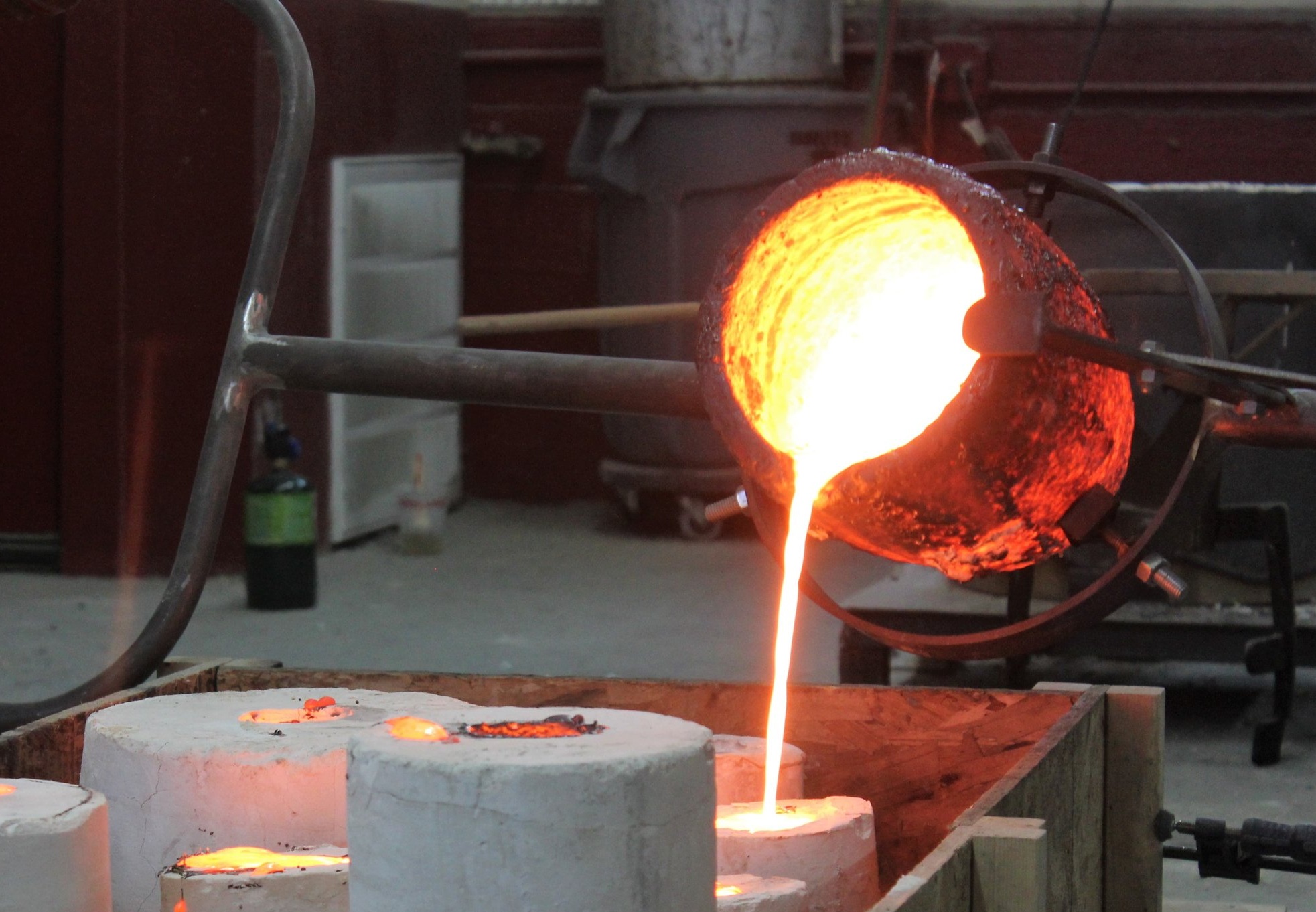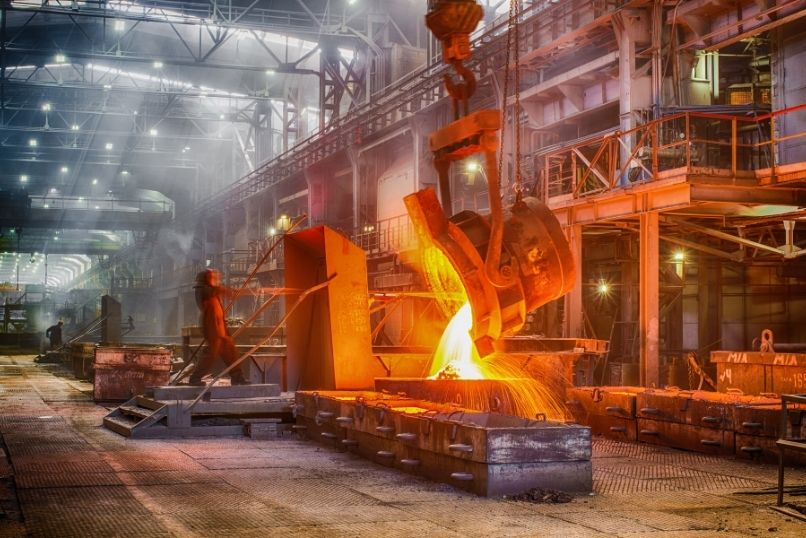How Modern Foundries Blend Traditional Metal Casting with Technology
Wiki Article
Understanding Metal Casting Processes: Innovations and Patterns in the Foundry Sector
The foundry market is experiencing considerable makeovers driven by technological developments. Technologies such as 3D printing and expert system are reshaping metal casting procedures, boosting efficiency and precision. Sustainable methods are obtaining traction, stressing the significance of environmental duty. On top of that, the intro of advanced products and automation is enhancing overall casting high quality. These advancements suggest a crucial shift in the sector, questioning concerning future instructions and implications for suppliers.Innovations in 3D Printing for Metal Casting
Current innovations in 3D printing innovation have actually considerably changed the landscape of steel casting. The integration of additive production strategies has actually allowed the fast production of complex patterns and molds that were difficult or formerly challenging to achieve with conventional methods. By making use of materials such as sand and steel powders, producers can create detailed geometries that boost style flexibility and lower material waste. This innovation not just expedites the prototyping procedure however additionally enables for the personalization of parts customized to specific applications.
3D printing facilitates much shorter lead times, which is vital in industries calling for fast turn-around for parts. The technology additionally supports the production of light-weight structures, thereby boosting energy performance in output. Because of this, the foundry sector is experiencing a change in the direction of more lasting methods, driven by the performance and precision provided by these modern-day 3D printing techniques in steel casting procedures.
The Role of Expert System in Precision Manufacturing
As sectors significantly embrace advanced production technologies, fabricated intelligence (AI) is playing a pivotal duty in enhancing precision manufacturing processes. AI formulas evaluate substantial datasets to maximize and identify patterns production criteria, leading to improved accuracy and performance. In metal casting, AI help in predictive maintenance, lowering downtime by forecasting tools failures before they happen.In addition, AI-driven simulations allow suppliers to design the casting procedure, refining layouts and minimizing defects. Artificial intelligence techniques enhance quality assurance by spotting abnormalities in real-time, therefore making sure that only items fulfilling rigid specifications proceed through the assembly line.

Sustainable Practices in the Foundry Market
Sustainability has actually become a crucial focus in the foundry market, motivating producers to take on techniques that minimize environmental effect while keeping performance - Metal Casting. One famous approach includes the recycling of products, specifically steels, which substantially minimizes waste and power intake. Factories are significantly applying closed-loop systems, enabling the reuse of sand and other casting materials, thereby reducing the demand for virgin sourcesIn addition, energy-efficient modern technologies, such as electric heating systems, are acquiring grip, as they lower greenhouse gas emissions contrasted to traditional techniques. Furthermore, lots of factories are exploring the usage of eco-friendly binders and green coatings to decrease toxic results. Staff member training on sustainable practices has likewise ended up being important, fostering a society of environmental duty within organizations. Overall, these lasting methods not just add to ecological conservation yet also boost the long-lasting viability of the foundry market in an increasingly eco-conscious market.
Technologies in Materials for Boosted Casting High Quality
With the continuous development of the foundry sector, advancements in products have become crucial for enhancing casting top quality. Advanced alloys and composite materials are progressively being utilized to boost mechanical buildings and decrease issues in castings. These products typically offer Check This Out remarkable strength-to-weight proportions and enhanced resistance to deterioration and wear, addressing the needs of modern-day applications.Additionally, the consolidation of nanomaterials is gaining traction, permitting for finer microstructures that result in boosted surface coatings and dimensional accuracy. Aluminum Foundry. 3D printing modern technologies also play a function in producing intricate geometries with minimal waste, making it possible for the usage of specialized materials that were previously testing to cast
The development of environmentally friendly binders and ingredients contributes to sustainable practices while maintaining top quality results. Jointly, these technologies not just enhance the performance of actors items but also align with the market's change towards sustainability and performance.
Automation and Robotics in Metal Casting Processes
Automation and robotics are transforming metal casting processes by boosting and streamlining operations precision. In modern-day factories, robotic systems are employed for jobs such as mold and mildew handling, putting, and completing, considerably minimizing human treatment. This not just reduces the danger of mishaps however likewise assures constant top quality in production.Automation innovations, such as computer system numerical control (CNC) makers, help with intricate layouts and intricate geometries that were formerly challenging to achieve. In addition, real-time data analytics enable suppliers to enhance and monitor procedures performance constantly.
The combination of automation brings about enhanced efficiency and efficiency, enabling shops to meet expanding market needs while decreasing lead times. As the market welcomes these improvements, the workforce is likewise evolving, needing new abilities to operate and preserve advanced equipment. In general, the fostering of automation and robotics is an essential trend forming the future of metal casting procedures.
Often Asked Questions
What Is the Background of Metal Casting Techniques?
Metal casting techniques date back to ancient human beings, with evidence of bronze casting in Mesopotamia around 3000 BCE. Over centuries, methods my review here advanced significantly, integrating improvements in products and technology, forming contemporary commercial practices.Exactly How Does Metal Casting Effect the Atmosphere?
Metal casting considerably impacts the environment through power intake, exhausts, and waste generation. Innovations in sustainable techniques and modern technologies aim to reduce these results, promoting more ecologically pleasant methods within the industry.What Precaution Are Essential in Shops?

What Are Common Problems in Metal Casting Products?
Typical flaws in steel casting items include porosity, shrinking, misruns, chilly shuts, and surface area flaws. These problems develop from variables such as inappropriate temperature level control, inadequate mold and mildew layout, and contamination throughout the casting procedure.Just How Do Foundries Make Certain Quality Assurance in Casting Processes?
Shops apply rigorous quality control measures via routine examinations, standard screening, procedure tracking, and adherence to market criteria. These techniques aid continue reading this identify problems early, making sure the honesty and integrity of the last casting items.Innovations such as 3D printing and synthetic intelligence are reshaping steel casting processes, improving efficiency and precision. Current improvements in 3D printing modern technology have considerably transformed the landscape of metal casting. Automation and robotics are revolutionizing steel casting processes by improving and enhancing operations precision. Metal casting techniques date back to old people, with proof of bronze casting in Mesopotamia around 3000 BCE. Typical defects in steel casting items include porosity, shrinkage, misruns, cool shuts, and surface area flaws.
Report this wiki page